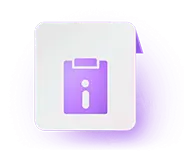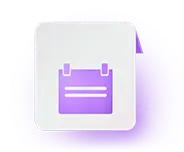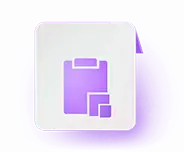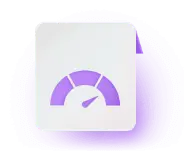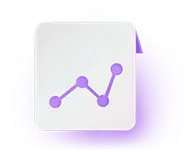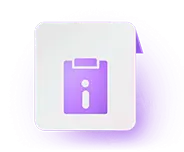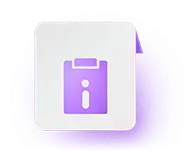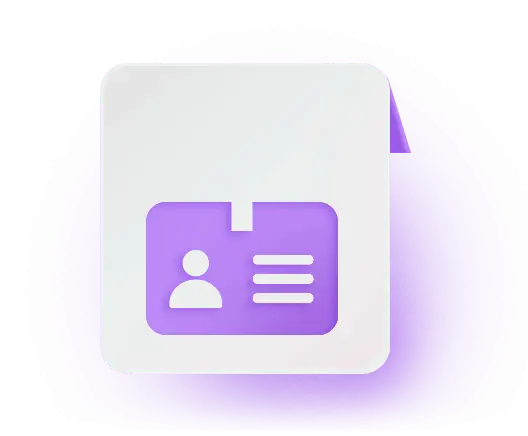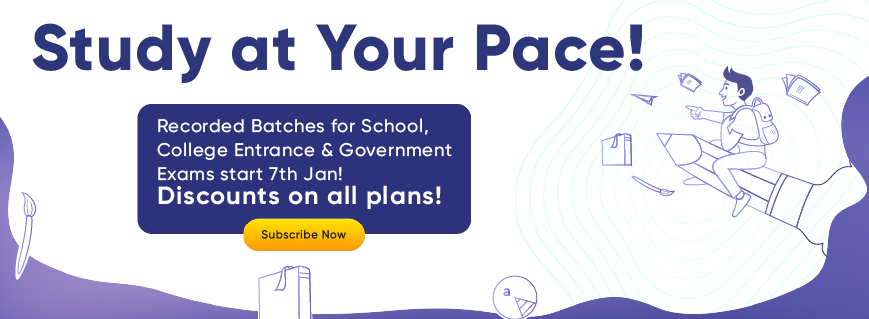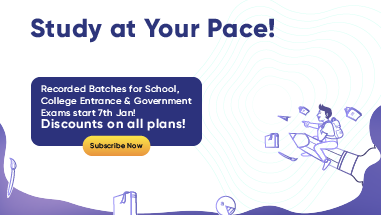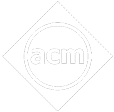- Written by Rahul Khatake
- Last Modified on 5-11-2024
West Bengal Board Class 10 Exam 2025
The West Bengal Board of Secondary Education is an autonomous authority established by the West Bengal state government for examining and framing rules and regulations and guidelines for the secondary school level examination. The board conducts the Class 10 board exam. This exam is popularly known as “Secondary Education” in English and “Madhyamik Pariksha” in Bengal.
Class 10 West Bengal board examination is conducted as per the syllabus, guidance and assessment system by the West Bengal Board of Secondary Education. And students must be aware of the exam pattern, exam date, and other details to ace the exam. Students can get all the information about the exam on this article. Continue reading to know more about the West Bengal Board Class 10 exam 2023.

West Bengal Board Class 10 Exam Summary
The West Bengal Board Class 10 exam is conducted every year usually in March. Class 10 exam plays an important role in helping students choose their course for higher education. The board exam is conducted for 3 hours and the full mark for each subject is 100. However, before going into further details let us have a look at the West Bengal Board Class 10 exam summary in the table below:
| Particulars |
Details |
|
Exam Name
|
West Bengal Board Madhyamik
|
|
Conducting Body
|
West Bengal Board of Secondary Education
|
|
Frequency of Conduct
|
Once a year
|
|
Mode of Exam
|
Offline
|
|
Exam Duration
|
3 hours 15 minutes
|
|
Full Marks
|
100 for each paper
|
|
Passing Marks
|
34%
|
As per the regulations of the West Bengal Board of Secondary Education (WBBSE), a student of grade 10 will be evaluated throughout the year through 1st, 2nd, and 3rd summative and formative assessments. The student has to obtain the pass mark, to become eligible to sit for the final board examinations.
West Bengal Board Class 10 Official Website
https://wbbse.wb.gov.in
West Bengal Board Class 10 Latest Updates
- The West Bengal Board of Secondary Education released the Class 10 results on May , 2025. (Direct Link)
- The West Bengal Board Class 10 exams were conducted on February , 2025, and ended on March , 2025.
- The authorities have released the West Bengal Board class 10 exam schedule. Click here to check the notification.
West Bengal Board Class 10 2023 Application Process
The registration form for West Bengal Class 10 Board exams is released on the website. Students studying in class 10 must fill out the application form before the due date. The registration for students is usually done by the school authorities and students have to pay the registration fee. The details filled out in the form will be used to print on the admit card.
The steps to fill out the application form online are given below:
- Step 1: Visit the board’s official website, wbbse.wb.gov.in
- Step 2: Click on the ‘Download’ option which is toward the right end of the homepage.
- Step 3: Select the ‘West Bengal Board 10th Application Form.’
- Step 4: Fill out the form under the guidance of the school authorities to avoid any mistakes.
- Step 5: Pay the fees and submit the form to the respective school.
West Bengal Board Class 10 2023 Exam Pattern
The exam pattern is useful to help students prepare for the exam in the right way. Knowing the exam pattern gives them an idea of the marking scheme, the exam trends, and the type of questions that can be asked. In this way, students will be able to strategise their studies to score excellent marks in the exam.
Exam Pattern Details – Scoring Pattern (+/- Marking)
There are 8 subjects included in the West Bengal Board Class 10 curriculum. And the full mark for each is 100, out of which 90 marks are for theory and 10 marks are for internal assessments. Students have to score a minimum of 282 marks out of 800 or 34% to pass the board exam. The exam duration is for 3 hours and 15 minutes and there is no negative marking for wrong answers. The table below shows the details of the marking scheme for different subjects.
| Subject |
Full Marks |
| Compulsory subjects |
Written exam |
Internal Formative Evaluation |
Total |
| First language – Bengali |
90 |
10 |
100 |
| Second language – English |
90 |
10 |
100 |
| Mathematics |
90 |
10 |
100 |
| Physical Science and Environment |
90 |
10 |
100 |
| Life Science and Environment |
90 |
10 |
100 |
| Geography and Environment |
90 |
10 |
100 |
| History and Environment |
90 |
10 |
100 |
| Health and Physical Education |
90 |
10 |
100 |
| Optional Elective subject (Additional subject) |
|
|
100 |
| Total Marks |
700 |
Note: The marks scored in the optional elective subject (Additional subject) will not be added to the total marks.
The grading system depends on the marks obtained by the candidates as shown below:
| Marks Obtained |
Grade |
Performance Indicator |
| 90 – 100 |
AA |
Outstanding |
| 80 – 89 |
A+ |
Excellent |
| 60 – 79 |
A |
Very Good |
| 45 – 59 |
B+ |
Good |
| 35 – 44 |
B |
Satisfactory |
| 25 – 34 |
C |
Marginal |
| Below 25 |
D |
Disqualified |
West Bengal Board Class 10 Syllabus 2023
The syllabus is an important resource that students must have while preparing for the board exam. It gives them an overview of the subject and the chapters and topics included. Referring to it helps students know what to study and prepare their study plan accordingly. Students can refer to the section below for the WB Board Class 10 subject-wise syllabus.
WB Board Class 10 Syllabus for English as Second Language
Class 10 English includes sections like reading and comprehension, writing, grammar, prose and poetry. The syllabus is designed to improve good English reading and writing skills in students. The table below provides the WB Board Class 10 syllabus for English as a Second Language.
| Chapter No. |
Chapter Name |
| 1 |
Father’s Help — R.K. Narayan |
| 2 |
Fable — Ralph Waldo Emerson |
| 3 |
The Passing Away of Bapu — Nayantara Sehgal |
| 4 |
My Own True Family — Ted Hughes |
| 5 |
Our Runaway Kite — Lucy Maud Montgomery |
| 6 |
Sea Fever — John Masefield |
| 7 |
The Cat — Andrew Barton Paterson |
| 8 |
The Snail — William Cowper |
WB Board Class 10 Syllabus for Mathematics
Mathematics needs a lot of practice along with conceptual understanding. Students should ensure that they cover all the chapters included in the syllabus in order to ace the board exam.. The syllabus for West Bengal Board Class 10 Mathematics is as follows:
|
Chapters
|
Topics
|
|
Arithmetic
|
Simple Interest, Compound Interest, and Uniform Rate of Increase or Decrease, Partnership Business
|
|
Algebra
|
Quadratic Equation in one Variable, Variation, Quadratic Surd, Ratio and Proportion,
|
|
Geometry
|
Application of Theorem for the Solution of Geometric Problems, Construction of Circumcircle and Incircle of a Triangle
|
|
Trigonometry
|
Concept of Measurement of Angle, Trigonometric Ratio and Trigonometric Identities, Trigonometric Ratios of Complementary Angle, Application of Trigonometric Ratios: Heights & Distances
|
|
Mensuration
|
Cuboid, Right Circular Cylinder, Sphere, Right Circular Cone, Problems Related to Different Solid Objects
|
|
Statistics
|
Mean, Median, Ogive, Mode
|
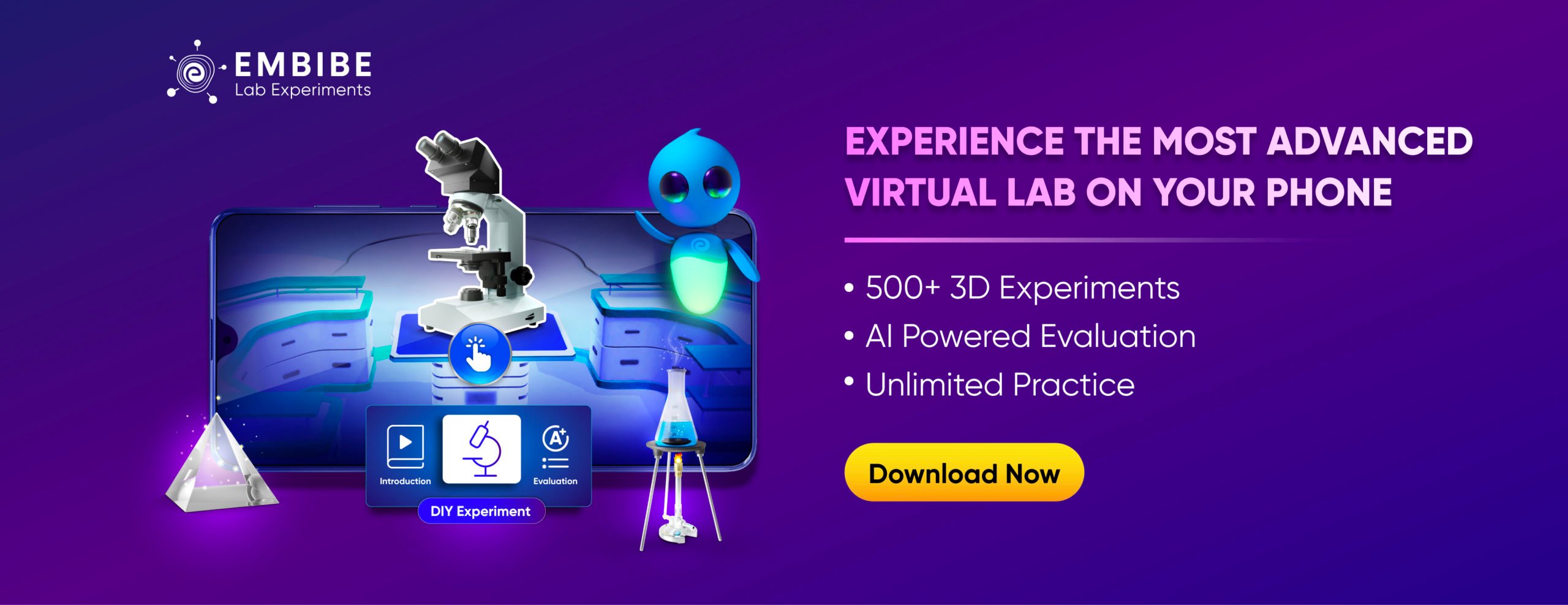
WB Board Class 10 Syllabus for Physical Science and Environment
Physical Science includes topics from Physics and Chemistry. These topics are meant to help students understand the physical and natural processes of things around us. The syllabus for West Bengal Board Class 10 Physical Science and Environment are as follows:
| Chapter No. |
Chapter Name |
| Environment |
| 1 |
Concerns about Our Environment |
| 2 |
Behaviour of Gases |
| 3 |
Chemical Calculations |
| Chemistry |
| 4 |
Periodic Table and Periodicity of the Properties of Elements |
| 5 |
Ionic and Covalent Bonding |
| 6 |
Electricity and Chemical Reactions |
| 7 |
Inorganic Chemistry in the Laboratory and in Industry |
| 8 |
Metallurgy |
| 9 |
Organic Chemistry |
| Physics |
| 10 |
Thermal Phenomena |
| 11 |
Light |
| 12 |
Current Electricity |
| 13 |
Atomic Nucleus |
WB Board Class 10 Syllabus for Life Science and Environment
Life Science deals with the study of life, the process, and the mechanism of living beings. Life Science has two sections – Botany and Zoology. The syllabus for West Bengal Board Class 10 Life Science and Environment are as follows:
| Chapter No. |
Chapter Name |
| 1 |
Control and Coordination in Living Organisms |
| 2 |
Continuity of Life:
a) Cell division and Cell Cycle
b) Reproduction
c) Sexual Reproduction in Flowering Plants
d) Growth and Development
|
| 3 |
Heredity and Some Common Genetic Diseases |
| 4 |
Evolution and Adaptation |
| 5 |
Environment, Its Resources and Their Conservation |
WB Board Class 10 Syllabus for History and Environment
History deals with the past of humans, the changes that occurred, and various resistance or rebellions. It is important for students to study all the chapters thoroughly and mark the important dates. The syllabus for West Bengal Board Class 10 History and Environment are as follows:
| Chapter No. |
Chapter Name |
| 1 |
Chapter-1: Ideas of History |
| 2 |
Chapter-2: Reform: Characteristics and Observations |
| 3 |
Chapter-3: Resistance and Rebellion: Characteristics and Analyses |
| 4 |
Chapter-4: Early stages of Collective Action: Characteristics and Analyses |
| 5 |
Chapter-5: Alternative Ideas and Initiatives (From mid-19th Century to the Early 20th Century): Characteristics and Observations |
| 6 |
Chapter-6: Peasant, Working Class and Left Movements in 20th Century India: Characteristics and Observations |
| 7 |
Chapter-7: Movements organized by Women, Students and Marginal People in 20th Century India: Characteristics and Analyses |
| 8 |
Chapter-8: Post-Colonial India: Second half of the 20th Century (1947-1964) |
WB Board Class 10 Syllabus for Geography and Environment
Geography is the study of the physical features of the earth, different regions in the earth, and how human activities have an impact on it. Students should refer to the syllabus to know what chapters and topics to study. The syllabus for West Bengal Board Class 10 Geography and Environment are as follows:
| Chapter No. |
Chapter Name |
| 1 |
Theme-1: Exogenetic processes and resultant landforms |
| 2 |
Theme-5: India – Introduction, Physical environment |
| 3 |
Theme-2: Atmosphere |
| 4 |
Theme-3: Hydrosphere |
| 5 |
Theme-5: India – Economic environment |
| 6 |
Theme-4: Waste management |
| 7 |
Theme-6: Satellite imagery and Topographical map |
| 8 |
Map (India) |
West Bengal Board Class 10 Exam Blueprint 2023
The exam blueprint gives students an idea about the marks distribution of different chapters or units of a subject. Students should be aware of the weightage while preparing for the exam. This is useful when preparing a study timetable, wherein they can allocate adequate time for each topic depending on the weightage. Students can get the subject-wise blueprint in the sections below:
WBBSE Class 10 English Blueprint
The English blueprint gives the marks distribution for different sections included in the subject. Referring to it helps students map their timetable accordingly. Students can find the WBBSE Class 10 English blueprint in the table below:
|
Units
|
Total No. of Questions
|
Marks
|
|
Prose
|
13
|
25
|
|
Poetry
|
12
|
20
|
|
Rapid Reader
|
11
|
15
|
|
Grammar and Rhetoric
|
10
|
10
|
|
Writing
|
3
|
20
|
|
Total
|
49
|
90
|
WBBSE Class 10 Physical Science and Environment Blueprint
Physical Science and Environment has 13 chapters in total, and students should study them thoroughly. The chapters: Light and Current Electricity have the highest weightage of 12 marks each. Students can refer to the table below for the detailed blueprint of WBBSE Class 10 Physical Science and Environment:
|
Section
|
Chapters
|
Marks
|
|
Environment
|
Concerns about Our Environment
|
5
|
|
Behaviour of Gases
|
8
|
|
Chemical Calculations
|
4
|
|
Physics
|
Thermal Phenomena
|
5
|
|
Light
|
12
|
|
Current Electricity
|
12
|
|
Atomic Nucleus
|
5
|
|
Chemistry
|
Periodic Table and Periodicity of the Properties of Elements
|
6
|
|
Ionic and Covalent Bonding
|
6
|
|
Electricity and Chemical Reactions
|
6
|
|
Inorganic Chemistry in the Laboratory and in Industry
|
8
|
|
Metallurgy
|
5
|
|
Organic Chemistry
|
8
|
|
Total
|
90
|
WBBSE Class 10 Life Science and Environment Blueprint
Life Science and Environment deal with the study of life on earth. The subject has 5 chapters and the chapter Environment, Its Resources, and their Conservation have the highest weightage of 13 marks. Students can find the detailed blueprint in the table below:
|
Chapters
|
Total No. of Questions
|
Total Marks
|
|
Control and Coordination in Living Organisms
|
12
|
19
|
|
Continuity of Life
|
11
|
17
|
|
Heredity and Some Common Genetic Diseases
|
9
|
15
|
|
Evolution and Adaptation
|
9
|
15
|
|
Environment, Its Resources and Their Conservation
|
13
|
24
|
|
Total
|
54
|
90
|
West Bengal Board Class 10 Exam Date 2023
The West Bengal Board of secondary examination (WBBSE) released the West Bengal Board Madhyamik Class 10 exam schedule on September 27, 2022. The exams will be conducted from February 23, 2023 to March 4, 2023. Students can find the direct link on the official website to check the exam dates.
The West Bengal Board class 10 exam routine is given in the table below:
| Exam Dates (11:45 am to 3:00 pm) |
Subject |
| February 23, 2023 |
First Languages * |
| February 24, 2023 |
Second Languages ** |
| February 25, 2023 |
Geography |
| February 27, 2023 |
History |
| February 28, 2023 |
Life Science |
| March 2, 2023 |
Mathematics |
| March 3, 2023 |
Physical Science |
| March 4, 2023 |
Optical Elective Subjects |
WBBSE Class 10 Admit Card 2023
The authorities released the West Bengal Board Madhyamik admit card on February 13, 2023. The authorised representatives of the schools will be able to collect the admit cards from the camp offices on February 15, 2023. Once the schools collect West Bengal Board Class 10 hall tickets, they must issue them to the students. Students must bring their hall tickets to the examination center failing which, they won’t be allowed to take up the board examination. Below are the details mentioned West Bengal Madhyamik admit card 2023:
-
Student’s name,
-
Roll number,
-
Date of birth,
-
Exam dates,
-
Exam timings,
-
General instructions
West Bengal Board Class 10 Study Plan to Maximise Score
Preparing for the board exam requires hard work and consistency. However, apart from that students should also have a proper study plan and some preparation tips. Following them can result in better preparation which eventually impacts the overall scores of the students. WB Board Class 10 students can find the detailed study plan and some preparation tips in the section below:
WB Board Class 10 Preparation Tips
Preparation tips help students gain an edge over the exams and study smartly. Students can implement the tips not only during the exam but on a daily basis, when they are studying. Here are a few preparation tips for WB Board Class 10 exam:
- Identify the syllabus for the respective summative period.
- If students do not understand any topic, get it clarified by the teacher or by referring to 3D videos on Embibe.
- Make notes wherever necessary.
- For Mathematics, repetitive practice of problems is necessary to ensure that you can solve all the problems that are given in the textbooks. Students can also practice questions on Embibe.
- Prepare answers for all the questions given in the exercises of each chapter and at the end of the book.
- Apart from the West Bengal Board textbooks, try to also follow different books like ebooks on Embibe.
- Take the mock tests for Class 10 at Embibe for more practice.
West Bengal Board Class 10 Detailed Study Plan
A detailed study plan helps students focus on all subjects equally to score good marks in all. Having a proper study plan ensures that students study systematically and complete their syllabus on time. Students can refer to the WB Board Class 10 detailed study plan below:
- Be systematic and planned: The students need to create a proper schedule for preparation for them keeping in mind the whole syllabus, to the extent of the preparation they have achieved.
- Cover the whole syllabus: The candidates have to go through the whole content of the syllabus and understand all the topics of the chapters that he/she has to study.
- Pay equal attention to each subject: Some students have the wrong idea that the subjects like Mathematics, Physics, Biology, Chemistry, etc. are the only important subjects. They generally put more effort into these subjects and neglect the other subjects. This should be avoided in order to score good marks in the exam.
- Revise properly: Revision is very important. From time to time analyse your preparation level and identify the gaps. Make a proper revision plan for all the subjects. Make the revision plan as a part of the study plan explained in point number one.
- Practice Sample Papers: Practice on both the sample papers and the previous year’s question papers available on the official website of WBBSE and Embibe. This helps in understanding the question pattern, marking schemes, difficulty level, time management, etc.
- Follow textbooks recommended by the West Bengal Board of Secondary Education: To score well in Class 10 West Bengal Board school level exams, it is sufficient to study the textbooks published and recommended by the board. If the students want additional books, they can follow any standard textbook like NCERT, etc.
West Bengal Board Class 10 Exam Result 2023
The Class 10 result was declared on May 24, 2023. Since the results are out students can check them online from the board’s website. The Class 10 result assesses a student’s performance on the board exam and if they are eligible for the course and stream they chose for their higher education.
West Bengal Board Class 10 Topper’s List
In this article, we have provided all the details about the toppers for the students in West Bengal Board Class 10. Knowing the topper’s list gives students an idea about the previous year’s performance and the marks they scored. This helps them understand how high is the bar set and prepare for their own exam accordingly. Here is the list of the West Bengal Madhyamik 2022 toppers:
| Sl No. |
Rank |
Name |
Total Marks |
| 1 |
1 |
Arnab Ghorai |
693 |
| 2 |
2 |
Koushiki Sarkar |
692 |
| 3 |
3 |
Ananya Dasgupta |
691 |
| 4 |
3 |
Devshikha Pradhan |
691 |
| 5 |
4 |
Abhishek Dutta |
690 |
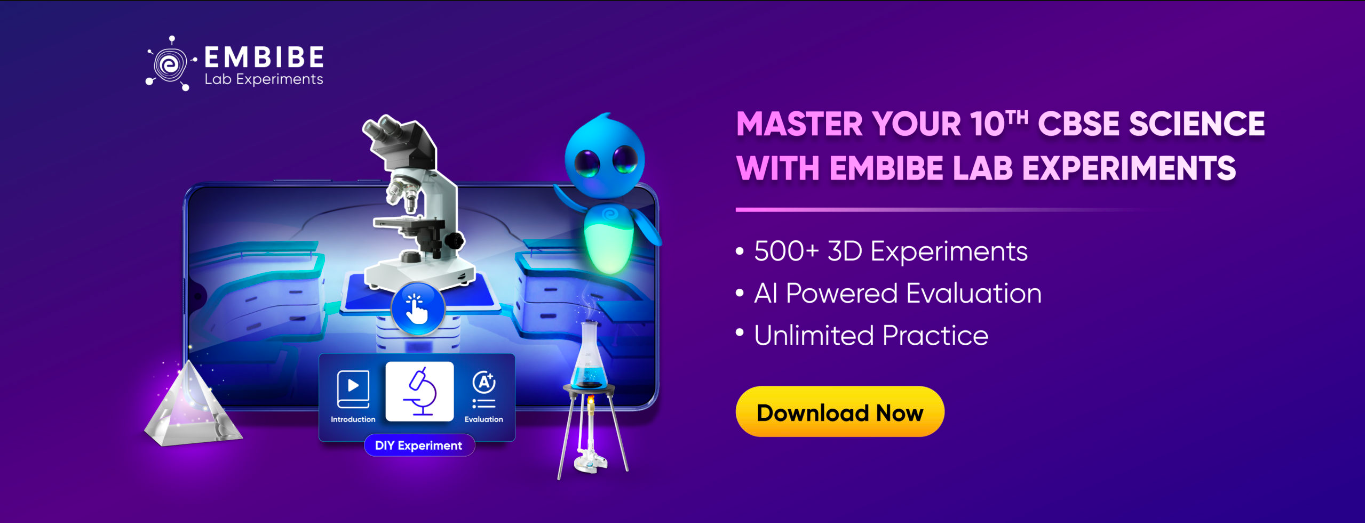
West Bengal Board Class 10 Supplementary Exam 2023
Students who failed one or two subjects in the main West Bengal Board Madhyamik exam can take the supplementary exam. It gives them a second chance to clear the board exams. The supplementary exam is expected to commence in August 2023, but the dates are not official yet. Once the dates are out, we will update the same here. The marks for the passed subjects will remain the same and the ones that a student has appeared as supplementary will be changed. A new mark sheet will be issued to students who applied for the WB Board Class 10 supplementary exam.
FAQs on to West Bengal Board Class 10 2023
Below are the most frequently asked questions with answers about WBBSE class 10 2023
Q: What is the popular name of the West Bengal Board Class 10 exam?
Ans: The West Bengal Board Class 10 exam is also known as the West Bengal Madhyamik exam.
Q: Where can I get details about the West Bengal Board Class 10 exam?
Ans: Students can get all the details about the West Bengal Board Class 10 exam on this page.
Q: When will the West Bengal Board class 10 2023 exam conducted?
Ans: The West Bengal Board Class 10 exam was conducted from February 23 to March 4, 2023.
Q: Where can I practice questions for WBBSE Class 10 exam?
Ans: Students can practice numerous questions on the WBBSE Class 10 exam on Embibe.
Q: Where can I take the WB Board Class 10 mock tests?
Ans: Students can take the WB Board Class 10 mock tests on Embibe for.
You can also check:
West Bengal Board Class 10: List of Educational Institutions
It is very crucial for students to select the best school for themselves to have a bright future ahead. Parents must sit with their children and decide what school to enroll them as it is a big step towards their career. To help students and their parents in this process, we have listed some of the best school in West Bengal in this article.
There are more than 12000 schools under the West Bengal Board of Secondary Education. Some of the schools affiliated to West Bengal Board are given in the table below:
| Sl No. |
Name of the School |
Private / Government |
Location |
| 1 |
Asansol Arunoday High School |
Private |
Asansol |
| 2 |
Domohani Kelejora High School |
Private |
Asansol |
| 3 |
Loreto Convent, Asansol |
Private |
Asansol |
| 4 |
St. Patrick’s Higher Secondary School |
Private |
Asanol |
| 5 |
St. Vincent’s High and Technical School |
Private |
Asanol |
| 6 |
Dr. Graham’s Homes, Kalimpong |
Private |
Darjeeling |
| 7 |
Gandhi Ashram School |
Private |
Darjeeling |
| 8 |
Goethals Memorial School, Kurseong |
Private |
Darjeeling |
| 9 |
Loreto Convent |
Private |
Darjeeling |
| 10 |
Mount Carmel School, Darjeeling |
Private |
Darjeeling |
| 11 |
Mount Hermon School |
Private |
Darjeeling |
| 12 |
Rockvale Academy |
Private |
Darjeeling |
| 13 |
St. Augustine’s School |
Private |
Darjeeling |
| 14 |
St. George’s Higher Secondary School |
Private |
Darjeeling |
| 15 |
St. Joseph’s School, Darjeeling |
Private |
Darjeeling |
| 16 |
St. Paul’s School, Darjeeling |
Private |
Darjeeling |
| 17 |
St. Roberts School, Darjeeling |
Private |
Darjeeling |
| 18 |
Aditya Academy (Senior Secondary) |
Private |
Barasat |
| 19 |
Amrai High School |
Private |
Durgapur |
| 20 |
Andal Mahabir High School |
Private |
Andal |
Future Exams After West Bengal Board Class 10
Besides the board exam that students appear there are other competitive exams too that they can take part in. These exams tests a student’s intellectual skills like reasoining, critical thinking, problem-solving and many more. The list of future exams for a Class 10 grade student under the West Bengal Board of Secondary Education is given below:
| Sl No. |
Exam |
| 1 |
11th West Bengal Council Exam |
| 2 |
12th West Bengal Council Exam |
| 3 |
KVPY SA Exam for admission into IISERs after 12th Board Exam |
Even while studying in the same grade (Class 10), the students can appear for other exams listed below for their own skill improvement, merit certificates, and scholarships.
| Sl No. |
Name of the Exam |
| 1 |
International Science Olympiad (ISO) |
| 2 |
International Maths Olympiad (IMO) |
| 3 |
English International Olympiad (EIO) |
| 4 |
English International Olympiad (EIO) |
| 5 |
General Knowledge International Olympiad (GKIO) |
| 6 |
International Computer Olympiad (ICO) |
| 7 |
International Drawing Olympiad (IDO) |
| 8 |
National Essay Olympiad (NESO) |
| 9 |
National Social Studies Olympiad (NSSO) |
| 10 |
NTSE (National Talent Search Examination) |









